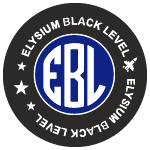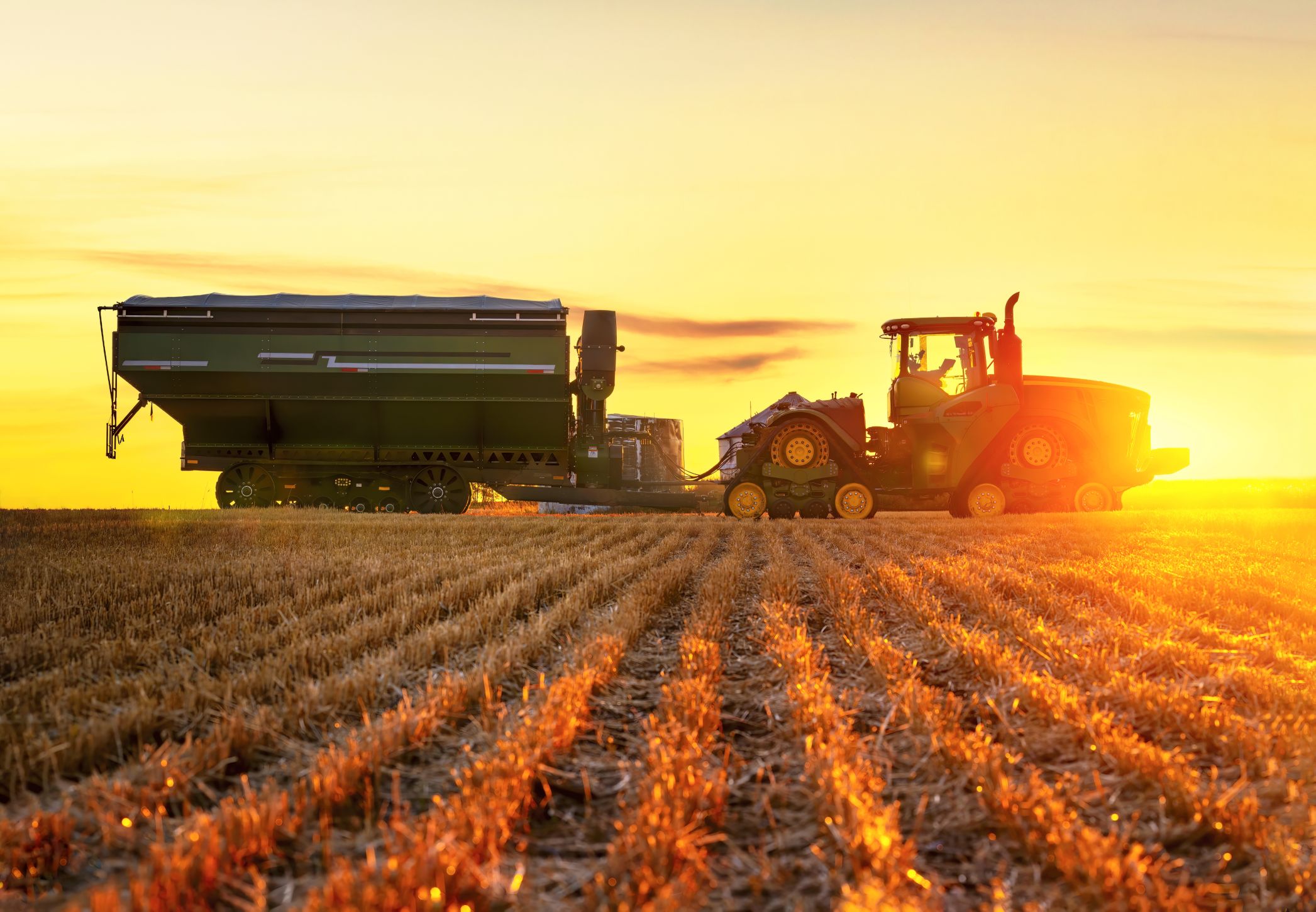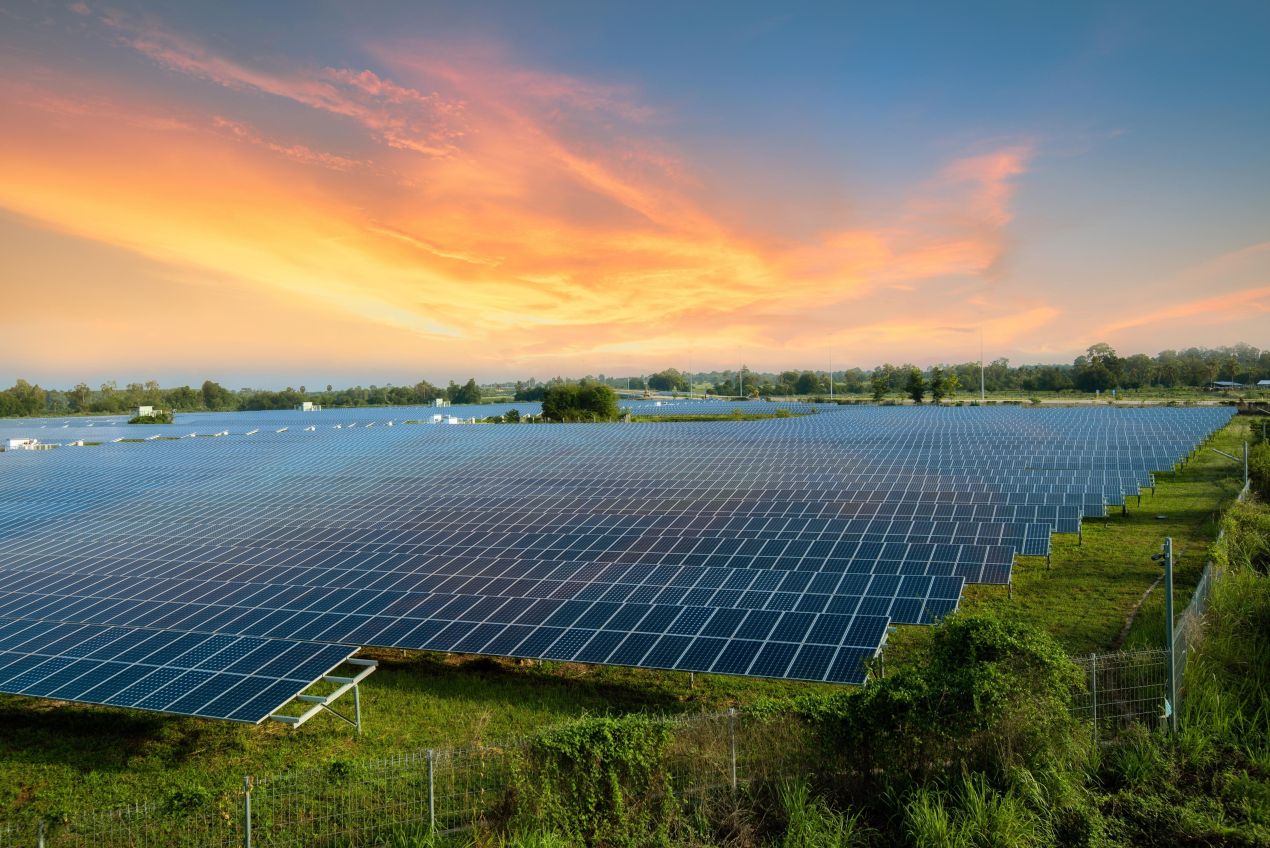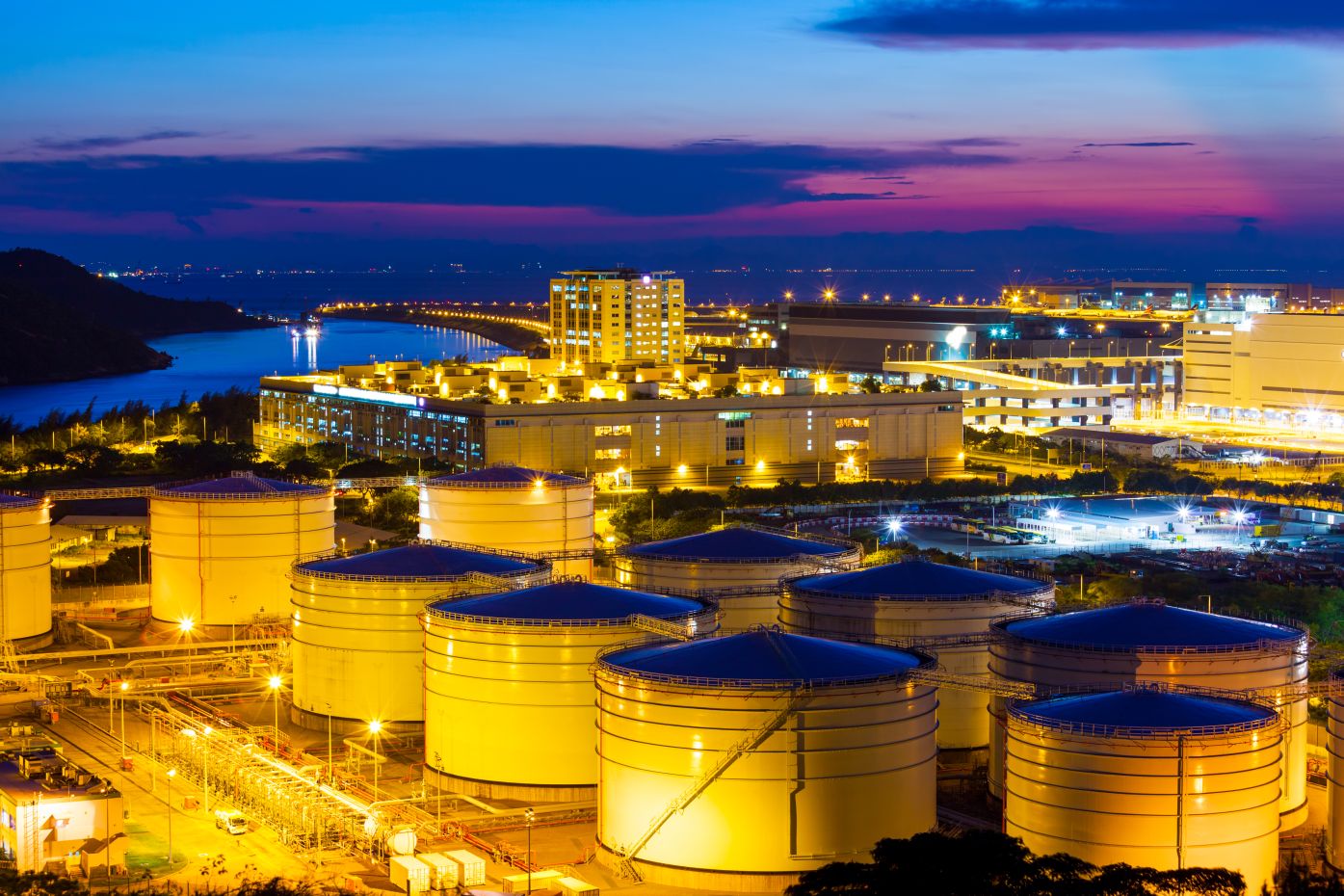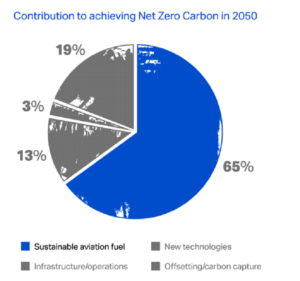
The aviation industry’s net-zero carbon emissions target is focused on delivering maximum reduction in emissions at source, through the use of sustainable aviation fuels (SAF), innovative new propulsion technologies, and other efficiency improvements (such as improvements to air traffic navigation). We estimate that SAF could contribute around 65% of the reduction in emissions needed by aviation to reach net-zero in 2050. This will require a massive increase in production to meet demand. The largest acceleration is expected in the 2030s as policy support becomes global, SAF becomes competitive with fossil kerosene, and credible offsets become scarcer.
What is SAF?
SAF is an umbrella term referring to fuels derived from non-fossil sources or ‘feedstock’, where through its process of cultivation and production, works to close the carbon cycle and resultantly achieve a significant reduction in life-cycle emissions relative to traditional jet fuel. Beyond reducing significant CO2 emission levels across its life cycle, SAF by design seeks to ensure a high level of integrity in broader sustainability criteria. This includes feedstock that do not cannibalize food production, utilize excess water, promote incremental land clearing, or negative impact on the likes of soil fertility, deforestation, and biodiversity. Whereas fossil fuels add to the overall level of CO2 by emitting carbon that had been previously locked away, SAF recycles the CO2 which has been absorbed by the biomass used in the feedstock during its life.
As it stands, there are seven biofuel production pathways that are certified to produce SAF, which perform at operationally equivalent levels to Jet A1 fuel. By design, these SAFs are drop-in solutions, which can be directly blended into existing fuel infrastructure at airports and are fully compatible with modern aircraft.
For more information, read the SAF Factsheet
Our Vision
Support the aviation industry long-term climate goal.
Increase the commercial deployment of SAF.
Our Focus
Corn Is a Very Efficient Feedstock for Producing Sustainable Aviation Fuel.
Agriculture
Ever wonder why Elysium Black Level (EBL) is focused on corn for use as a feedstock to produce sustainable aviation fuel (SAF)?
First, consider the scale. If we’re going to move the dial on carbon intensity in a market like jet fuel, we need to have the volume to replace millions of gallons of fossil-based fuels. Corn is grown on around 93 million acres across our nation.
Second, it’s efficient: This corn has long been used to feed livestock (rather than being eaten by people directly), and that doesn’t stop when we use it to make fuel. We separate out the most valuable part of the corn, the protein in each kernel, to feed livestock, pets, and aquaculture. What’s left is the starch that is used as the feedstock for our process. It’s like getting twice the use out of every acre. Plus, we save the corn oil for nutritional use as well.
Third, when you use climate-smart, sustainable agriculture across huge swaths of land, it makes a difference in terms of carbon intensity, and sequestering carbon in the soil.
Still wonder why corn makes sense as a feedstock for SAF? Have a look at these questions and answers:
No, corn is not set to be eliminated. Sustainability certifications only set standards for products to meet. Creating such standards enable more qualified claims to sustainable feedstocks, including corn.
Sustainably grown materials are not viewed differently from any other feedstock. Sustainability certifications issued by bodies such as the RSB and ISCC ensure that third-party standards are met.
To verify sustainability claims for bio-based products globally, EBL has relied on the expertise of trusted third-party groups. In the past, EBL has been certified by two such independent watchdogs, the Roundtable on Sustainable Biomaterials (RSB) and the International Sustainability and Carbon Certification System (ISCC). In achieving certification from these organizations, EBL ensured that the sustainability of its feedstocks was confirmed by third-party review, and the resulting carbon emitted using its fuels could be considered a renewable resource. EBL currently holds Roundtable of Sustainable Biomaterials (RSB) certification and hopes to explore certification for our future facilities and partners.
We use corn because it is sustainable, renewable, biogenic and has the natural ability to capture carbon. The best thing to do with municipal solid waste is to reduce or eliminate it, by diverting garbage from landfills and reusing and recycling more efficiently. The second-best usage is to capture landfill methane for local direct energy production. If municipal solid waste can be separated from fossil-based products such as plastic bottles, then there is potential for its use as a feedstock. But since GHG emissions are caused by the burning of petroleum/fossil-based products, burning plastics made from fossil carbon also contributes to the GHG footprint. These feedstocks need to be tracked and proven to be sustainable and renewable.
It’s the right place to start. Over the long run, many sources of renewable carbohydrates could be used. EBL’s technology enables the use of sugar, molasses, and lignocellulosic sources from agricultural residues like straw and stover, sugars from wood, and from municipal solid waste. In choosing feedstocks, the key criteria are sustainability profile, price, volume and—importantly for EBL—giving local farmers additional revenue streams for their products.
No. EBL uses inedible field corn to create high-value nutrition products, such as high-protein animal feed from the same corn that we use to make our fuels, so food price increases are not a result of using corn to make SAF. Our focus is on paying farmers fairly for the value they create through regenerative farming practices, on ensuring that we reduce or eliminate waste in every part of our value chain, and on improving access to sustainable hydrocarbons, fuels, and other products.
EBL’s process ensures that the protein produced from our feedstocks remains in the food system, through animal feed, pet nutrition, and aquaculture, helping to improve the availability of this crucial protein for the world while simultaneously working to mitigate climate change by producing low carbon, drop-in fuels.
Quite the opposite. Aside from farming—going back some 12,000 years—large-scale carbon capture does not exist. EBL embraces sustainable agriculture and partners with farmers to improve their farming practices. Our partner farmers capture carbon in the soil with sustainable practices such as precision agriculture and conservation tillage. They optimize the chemicals applied to the land for the benefit of the soil by using low-tillage and no-tillage practices, by managing groundwater run-off with drain tiles, and by using manure rather than synthetic nitrogen. Additionally, there are several technologies, such as those offered by Locus Ag Solutions, being developed that could increase this carbon capture by an order of magnitude or more by enhancing soil quality and root-system growth.
EBL’s process is designed to deliver nutrition from every acre of land, using only the residual starches as feedstock for fuel production. In fact, protein products for use in livestock, aquaculture, and pet food markets are expected to be the largest product created by weight of our Net-Zero 1 plant, currently under construction. We separate out the various components of every bushel of field corn that enters our process (including protein, oil, fiber, and starch). It is our goal to use the nutritional value present in every bushel to improve the food chain. That means that we prioritize improving the global supply of protein. Starches, on the other hand, are neither a significant source of nutritional value nor in short supply across the world. That’s why we use the residual starches, which are left over from producing high-value nutrition products, as feedstock for our fuels. Our goal is to use the whole kernel wisely to replace the whole gallon of fossil fuel responsibly.
No. The corn used for EBL – SAF is industrial, field corn. It is not sweet corn that is found in cans or corn on the cob. For generations, it has been grown for the purpose of feeding animals, not humans. When EBL uses this sustainably grown corn as a feedstock, the process creates approximately 5.7 pounds of high-value nutritional feed products for every gallon of fuel produced. In no way are our fuels taking food away from you or your family.
Ethanol
Ethanol is the largest market in the world for biofuel, and the U.S. is the largest market for it, particularly since our transportation sector is so large. EBL’s ethanol meets the need for low-carbon, renewable ethanol, and we are constantly exploring new and better ways to improve upon it.
One use for ethanol is to use it as an oxygenate blend stock that is blended with petrol-based gasoline to meet RFG area requirements. Or it can be blended with our isooctane to make fuel with reduced carbon intensity.

Ethanol is a building block for advanced renewable fuels
EBL announced in September 2021 that it received a patent for a process that encompasses upgrading ethanol and bio-based alcohols into drop-in, bio-based renewable diesel and sustainable aviation fuel products.
The United States Patent and Trademark Office has awarded EBL U.S. Patent Nos.
This patented process establishes a new technology and route to hydrocarbons that did not previously exist. This creates an opportunity for EBL to diversify ethanol production to help meet increasing demand for renewable diesel and jet fuel.
The patent falls in line with our business model to develop technology that can be used to produce drop-in hydrocarbon fuels and produce them at scale. When we apply these fuel pathways with our integrated approach to sustainability across the whole business system, including regenerative agriculture and sustainable farming techniques, powering our processes with non-fossil-based renewable energy, and producing food, paying attention to land-use issues, and responsible water use. The result is a new pathway to fuel that could produce net-zero greenhouse gas (GHG) emissions over the lifecycle of the product.
Low Carbon, Sustainable Gasoline, Isooctane and More
Renewable Gasoline
Blending Isooctane with renewable naphtha and alcohols (such as isobutanol or ethanol) yields a low-carbon gasoline replacement that provides excellent performance, meets gasoline standards set by vehicle manufacturers and government regulators. Renewable gasoline could be an enormous market for EBL and other biofuel manufacturers as the drumbeat of low-carbon fuel and gasoline blend stock becomes more pronounced.
Renewable gasoline represents a family of products we currently produce, including a 16-percent-isobutanol blended gasoline, and RG-50, a 50-percent-renewable fuel made in part from our renewable isooctane. We are working on additional products with the objective of replacing the whole gallon of gasoline with a 100-percent-renewable gasoline in the coming years. Our low-carbon fuels are made from renewable feedstocks such as low-carbon crops and other biomass resources.
The isooctane that is the base material of EBL’s renewable gasoline is derived from its corn-based isobutanol. The isooctane molecular structure has a strand of eight carbons, which gives it high energy content without premature ignition that plagues lower-octane gasolines. Isooctane is a pure hydrocarbon molecule found in gasoline and is already represented by a large part of most gasoline sold today. It’s used to make premium-grade gasolines. Like Isobutanol, isooctane also has several blend-property advantages: low Reid Vapor Pressure (RVP), and excellent octane rating. All the fuels we produce have virtually no sulphur or particulates.
Renewable Diesel
EBL can produce low-carbon, renewable diesel, and it’s coming at the right time to meet increased demand since the Renewable Fuels Standard (RFS) and California’s Low Carbon Fuel Standard (LCFS) went into effect.
Next-Generation Biodiesel Takes the Carbon Out of Commercial Applications.
Renewable Natural Gas (RNG)
EBL generates renewable natural gas, or RNG, by collecting manure from dairy farms. This concept fits in with our philosophy of addition by subtraction: We simultaneously seek to reduce greenhouse gas emissions (GHGs) as we figure out ways to generate usable renewable energy from the process.
According to Our World in Data, food production accounts for 25 to 35 percent of global GHGs, with more than 7 billion tons of carbon dioxide of that amount attributed to livestock and fish farms. Livestock contributes emissions to this measurement in a few different ways:
Generating RNG from Dairy Cow Manure.
Renewable Natural Gas Can Help Reduce Greenhouse Gas Emissions
Renewable natural gas is expected to be a key renewable energy source for transportation needs. RNG-fueled vehicles are estimated to result in up to 95 percent lower emissions than those fueled by gasoline or diesel on a lifecycle basis, according to a US Department of Energy study. RNG is proving to be a key fuel in the energy transition.
Download the Argonne National Laboratory Frequently Asked Questions about Renewable Natural Gas for Transportation.
Isobutylene
Renewable Fuel Now and Better Biofuel for the Future
Products To Make The World M0reNatural
Polyester. EBL has developed fully renewable carbon-based para-xylene, a key ingredient to convert petrol-based polyester for fibres and bottles to 100-percent renewable content. The technology is proven to work, and this market will matter in the future, once low-carbon chemical products and materials are valued like low carbon fuels.
We see opportunities to use our proprietary technology to make natural flavors, fragrances, and ingredients for consumer and personal care products, all with the same reduced carbon intensity that lets us maximize the value of what we know how to do.
We are leading the charge to substitute petrol-based chemicals with natural, renewable carbon-based copycats for such chemical as industrial solvents.
Isobutanol
Isobutanol is a basic building block we use to create many low-carbon advanced renewable fuels—the next generation of biofuels, with great commercialization potential. Yet isobutanol has an enormous market in its own right. The market for ethanol-free (E0) gasoline is estimated by the U.S. Energy Information Administration (EIA) to be about 5 billion gallons per year, outside of reformulated gasoline (RFG) regions. RFG areas are required to sell gasoline containing an oxygenate. Until recently, ethanol was the only gasoline oxygenate available. EBL’s isobutanol enables ethanol-free gasoline in RFG areas. When RFG regions are included in the market size estimation, the total ethanol-free market is expected to be about 7 billion gallons per year—and that’s a lot of potential. Who is interested in buying this E0 gasoline? Owners of boats, small engines, sports cars, luxury cars, and farmers.
Some interesting considerations:

EBL’s Bio-Based Iso-butanol Production Process Explained
Ethanol production plants are looking for new ways to add products to their production capability to increase margin at their site. EBL’s, MO, facility has exercised one of those options by producing isobutanol alongside ethanol in a side-by-side operation since 2021. Various streams in the plant are shared between the operations to minimize capital and operating cost.
Animal Feed & Protein
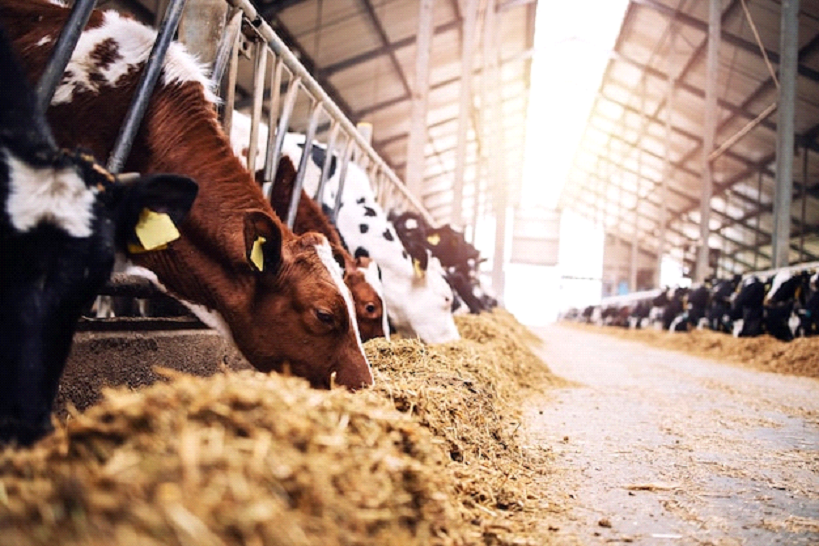
Anyone who knows anything about nutrition in the world and the danger of malnutrition pays attention to protein. Inexpensive animal feed and protein products enable lower-cost sources of food, and it’s critical to reduce the carbon footprint of food production as well, since it’s a huge industry with its own set of carbon sources and greenhouse gas emissions.
When EBL processes non-edible field corn, we capture large quantities of protein. We use that protein to make high-protein animal feed. We keep the starch out of the animal feed because it doesn’t do the animals any good health wise, and they produce better meat when they don’t eat it.
We don’t just discard the starch though, because it has huge value in multiplying the sustainability of the acreage used to grow corn sustainably. Instead, we use the starch in our proprietary GIFT® Process to create energy-dense liquids. While our facilities produce more animal feed on a tonnage basis than they do energy-dense liquids, those liquids store immense amounts of renewable energy.
This is the best kind of renewable energy, because our society already knows how to use it. With no refining, our energy-dense liquids can be used as sustainable aviation fuel or renewable premium gasoline. For every nine pounds of high protein animal feed, EBL also produces a gallon of aviation fuel.
The value from these products helps our entire product line cost structure. We get more from every acre of corn than one product, or the other. We get the sum total of their impact and draw more carbon dioxide from the atmosphere with regenerative agriculture methods. Lower greenhouse gas emissions and improved human nutrition matter to us and the world.
Isobutylene
Renewable Fuel Now and Better Biofuel for the Future
Products to Make the World More Natural
Polyester. EBL has developed fully renewable carbon-based para-xylene, a key ingredient to convert petrol-based polyester for fibers and bottles to 100-percent renewable content. The technology is proven to work, and this market will matter in the future, once low-carbon chemical products and materials are valued like low carbon fuels.
We see opportunities to use our proprietary technology to make natural flavors, fragrances, and ingredients for consumer and personal care products, all with the same reduced carbon intensity that lets us maximize the value of what we know how to do.
We are leading the charge to substitute petrol-based chemicals with natural, renewable carbon-based copycats for such chemical as industrial solvents.
